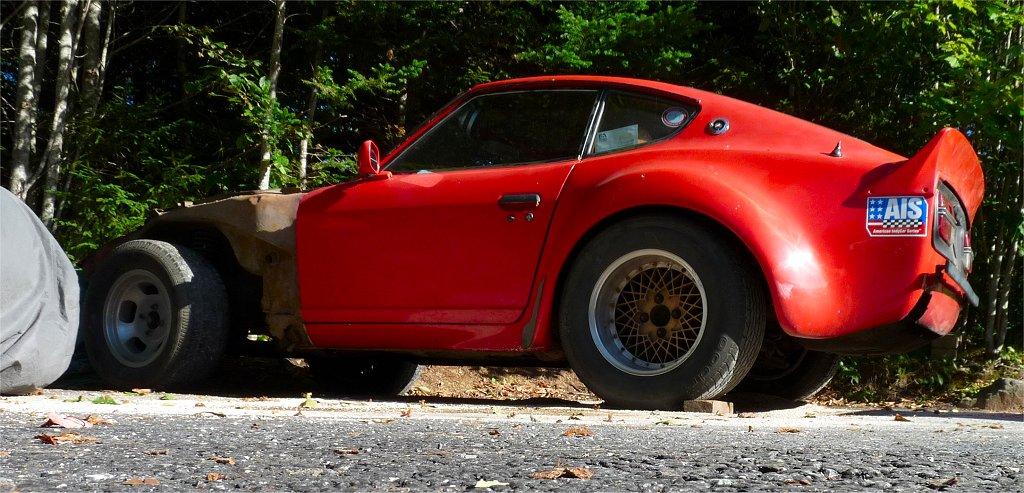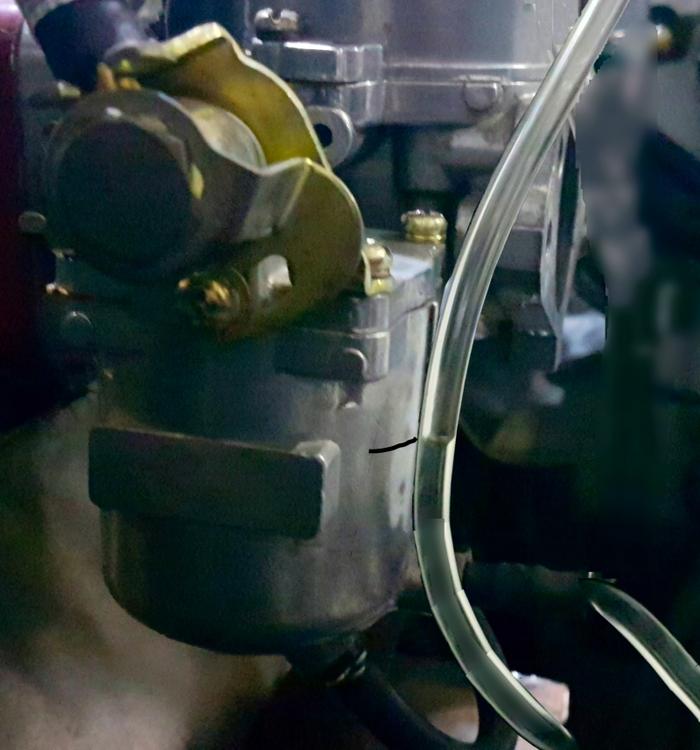
Everything posted by 240260280
-
Q: Second Ring Gap
Good point. The reason I went for the middle is to be safe and the Datsun FSM middle of range value aligns with the rule of thumb value for street cars. If the space is set too close, a period of too much sustained heat (like track racing) may expand the ring ends into each other and bind the piston. Also, the Datsun rings I removed were chrome whereas the replacements I purchased are molybdenum coated iron so they may expand differently. The rule of thumb coefficient changes for the application as max temperature and duration of max temperature can make the ring expand even more. For example the gap for a turbocharged track car is much greater. Here is a nice page to introduce most aspects of a piston ring: http://garage.grumpysperformance.com/index.php?threads/piston-ring-gaps.2837/
-
Q: Second Ring Gap
McCormick, Anderson, Mayhew, Rychlewski, New Developments in Piston Rings for the Modern Diesel Engine, SAE 750769 http://www.diagnosticengineers.org/journal_ articles/Ring Gaps vs Knowledge Gaps.php
-
Q: Second Ring Gap
1974 (and 1970) FSM states 2nd Ring gap for 260z (or 240z) is 0.15mm to 0.30mm (Avg = 0.23mm) Recent dyno tests now recommend the 2nd ring gap be larger than the first to reduce ring flutter caused by inter-ring build-up. The FSM average top ring gap of 0.30mm matches the 0.0040" per inch of bore rule of thumb. The new data suggests that for the above rule of thumb, the 2nd ring should be 0.0045" per inch of bore which equals 0.37mm 2nd ring gap. What are you all using...old or new?
-
Cleaned pistons and other parts
Me typo too.
-
Imagine that!
Maybe the test was to kill someone and see how much it is going to cost?
-
Cleaned pistons and other parts
Started to fit new rings (ITM). - FSM Gap range is 0.230mm to .0380mm (avg = 0.305mm) - Rule-of-Thumb Gap range is 0.249mm to .0332mm (avg = 0.291mm) - The gap for the original top ring in #1 was 0.69mm. - The ITM gap is 0.290mm (perfect as is). Any idea why the stock gap was so big? 0.69mm = 0.027" (maybe the previous engine builder mixed 0.27mm for 0.027") ?
-
Imagine that!
Drive in the Philippines. People will walk backwards into traffic. Here we have to watch out for deer . The driver in that vehicle was looking at phone, no hands on wheel, and most likely off the gas and brake. It is a joke having a human in those cars and claim they are in control. They are bums and the companies pushing this bad idea are evil.
-
Cleaned pistons and other parts
I think next time I'll get a hot plate and big enamel lobster boiler and boil them with spray-9 to see how it works. If you go the water cleaning route, you need to oil them to prevent rust, especially the spring metal plates inside. I read that some have luck just soaking in diesel/furnace oil for 24 hours.
-
Cleaned pistons and other parts
I just did a few parts from some SK's when I first got the Ultrasonic, Yesterday I did all 6 pistons. They came out great. 3 things that make a difference: 1. Pre-cleaning helps. I soaked pistons in hot water with Spray 9 heavy duty cleaner and used a brass wire brush to scrub. When the rings were removed I used a 4mm and 2mm ring cleaner to get the groves. 2. The ultrasonic bath must be very hot with a good cleaner (spray 9 again as it is nice to aluminum) 3. Run the ultrasonic for two 10min cycles with a movement between. It is not nearly as nice as Duff'd vapour blasting but they come out very clean.
-
Cleaned pistons and other parts
260z for a friend.
-
510 Su's
Yes, 1. Manifold vacuum port is high when idling. 2. Ported vacuum is high when off idle and when cruising. Cars start easier with less advance (so that an early [advanced] explosion does not push the slow moving crank somewhat backwards when cranking at 200rpm). Cars accelerate better just off idle with more advance. Cars use less fuel at cruise with higher advance. You need to find a ported vacuum advance source. Usually these are tapped near the throttle plate and come out to a small pipe.
- 510 Su's
-
1972 Float Adjustment ...
Route the hose next to the float bowl so that it presses against the line, you will be more accurate that way.
-
Cleaned pistons and other parts
Fired up the brass wire brushes, ultrasonic cleaner and bucket of spray 9 cleaner. Also used Zep Purple for the heavy stuff. All went well... now an expert at removing rings. Can't separate the oil pump yet... it is a tough one. My propane touch will convince it tomorrow.
- 510 Su's
-
1972 Float Adjustment ...
It is impossible to tell by looking at the lids. You have to look at the fuel height in the fuel bowl. Do this: 1. Draw line at 20mm or 23mm down. 2. Put measurement hose against the line. 2. Adjust tang until fuel level matches line on each bowl. 3. Done
-
1972 Float Adjustment ...
That looks perfect! No need to adjust fuel pressure.
-
1972 Float Adjustment ...
If you increase or decrease the fuel pressure, it is possible the fuel height will change and mess things up. If you are between 2.5psi and 4psi you are good. Set it once then leave it. Then adjust the fuel level using the float tang. For the most part, fuel pressure will only only determine how fast the bowls refill. It must not be too high so as to overpower the float's buoyancy pressure. It is not something you need to play with. The stock fuel pressure is ~3.4 psi.
-
Imagine that!
Makes me think about things like hood flying open and covering the sensors. Bugs, birds, and road debris covering/damaging the sensors. Sensor redundancy (we have 2 eyes).
-
1972 Float Adjustment ...
Yes, fuel delivery requirement for a non-stock engine or non-stock needle on a stock engine will usually result in deviation from 2.5 turns. As well engine issues may also require a deviation.
-
Imagine that!
The person on the bike was far enough away for the sensors on the Chinese suv to detect as they do not need light. As well an attentive person would have braked, and/or hit the horn, and or swerved. Like I mentioned, the video seems doctored with an unusual black spot covering the person for most of it.... something smells funny.
- 510 Su's
-
Imagine that!
The video is obviously manipulated wtf is that black blob that hides the cyclist (with white clothes and blonde hair) for most of the video? Cover up in many ways.
-
Imagine that!
Look at this video. 1. The driver is looking at cell phone, then looks up and kills the cyclist. 2. The cyclist did not jump out in front of the car. They were crossing the road. In my opinion, the driver was useless and the system for detecting objects on the road failed. The contrast on the camera seems to be manipulated as bike reflectors, etc are easily picked up in low light.
- 510 Su's







